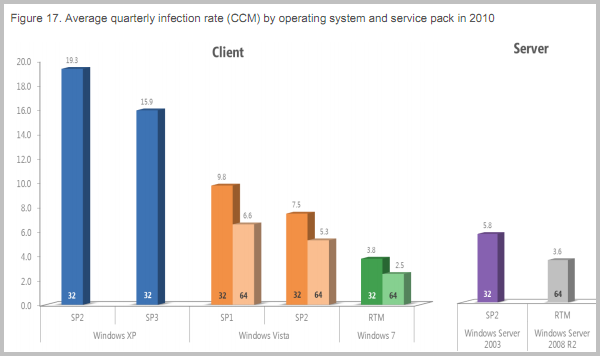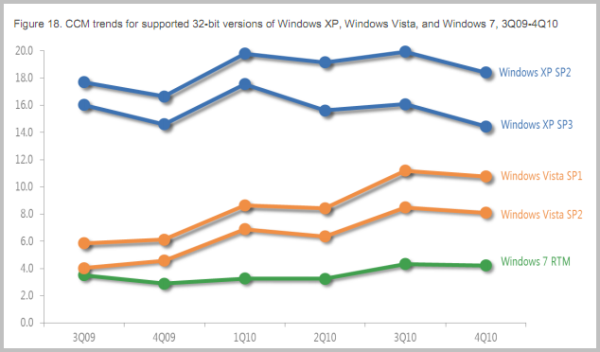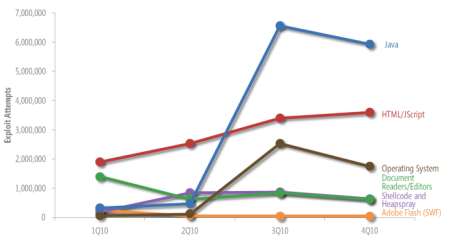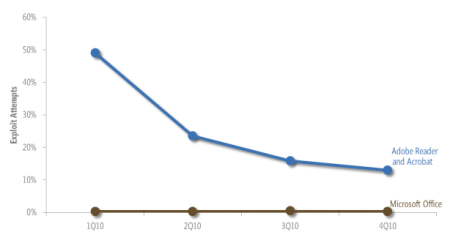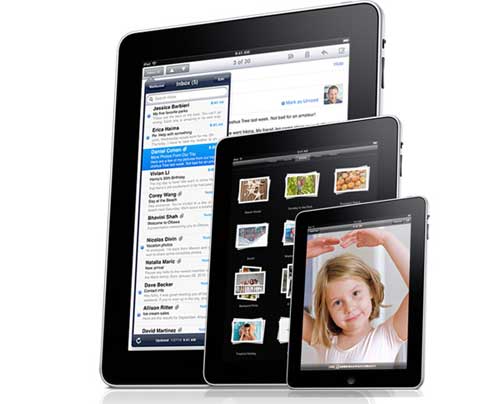The most talked-about figure in the newly-published statistics is a 33 per cent hike in the proportion of Windows 7 computers suffering from a malware infection and that’s a potentially misleading oversimplification. Microsoft Corporation released the tenth volume of its Security Intelligence Report, which noted that users of social networking sites are being targeted increasingly by cybercriminals and it highlights an increase of over 1200 per cent in phishing through social networking sites……..
The release of Microsoft’s Security Intelligence Report volume 10 is our most comprehensive global threat report to date, with in-depth regional threat intelligence for 117 countries from more than 600 million machines worldwide and this report highlights a polarization of cybercriminal behavior and an increasing trend of cybercriminals using marketing-like approaches and deception methods to target consumers.If you were looking for a reason to make the switch to Windows 7, you may have found it in form of Microsoft’s latest Security Intelligence Report. Security interested users find lots of information in the report, including the most dominant threats and trends.You will find information about infection rates for Microsoft operating systems somewhere in the middle of the report.When you look at the average infection rate per thousand computers, you will notice that infection rates for more recently released operating systems are lower than for earlier ones.Windows XP SP3 is showing an average infection rate of 15.9 computers per thousand. This figure drops to 7.5 on the most recent Vista version and 3.8 for Windows 7. The 64-bit editions of Vista and Windows 7 fare even better with 5.3 and 2.5 infections per thousand computers respectively.
32-bit Windows 7 computer systems are four times less likely to be infected with malicious software than Windows XP systems, and two times less likely than Windows Vista systems.Comparison is even more favorable if you compare 64-bit editions. The 64-bit edition of Windows 7 is 6 times less likely to be infected than Windows XP.Microsoft tries to explain the lower infection rate on 64-bit editions two-fold. One of the reasons may be that more tech savvy users pick the 64-bit edition of an operating system, the second that the Kernel Patch Protection feature of 64-bit Windows editions may contribute to that discrepancy as well.Infection trends confirm that 32-bit editions of Windows 7 have consistently had the lowest infection rates of all Windows 32-bit client operating systems.Trojans, worms, adware, password stealers and other potentially unwanted software made up the bulk of infections world wide. Microsoft found significant location differences.
- The United States and the United Kingdom, two predominantly English-speaking locations that also share a number of other cultural similarities, have similar threat mixes in most categories. Exceptions include Adware, which is more common in the UK, and Worms, which are more common in the US.
- Brazil has an unusually high concentration of Password Stealers & Monitoring Tools, primarily because of the prevalence of Win32/Bancos, which targets customers of Brazilian banks.
- China has a relatively high concentration of Miscellaneous Potentially Unwanted Software, Exploits, Backdoors, and spyware, and a relatively low concentration of Worms and Adware. China routinely exhibits a threat mix that is much different than those of other large countries and regions. Two of the most common threats in China, Win32/BaiduSobar and Win32/Sogou, are Chinese-language potentially unwanted software families that are uncommon elsewhere. The most common families in China also include a pair of exploits, JS/CVE-2010-0806 and
JS/ShellCode, that were less prevalent elsewhere. - Adware dominates in France, led by Win32/ClickPotato.
- Worms and Backdoors are unusually common in Spain. The top six families detected in Spain in 2010 were worm
- The threat mix in Russia resembles that of the world as a whole, with the exception of an unusually low concentration of Adware, perhaps because of the highly language-dependent nature of online advertising.
- In Germany, Trojan Downloaders & Droppers are nearly twice as common as in the rest of the world, led by Win32/Renos.
- Korea has a large concentration of viruses, led by Win32/Parite, and worms. Viruses and worms have long been unusually common in Korea perhaps because of the popularity of public Internet gaming centers the where viruses are easily transmitted between computers and removable volumes.
Running a specific Windows operating system version does not necessarily mean that you will have a higher chance of infection, as that chance depends on the individual user. Experienced computer users can reduce the chance of infection significantly, both by expertise and experience, and security software that they have deployed on their system.There are other interesting nuggets in the report. Take this chart of exploit attempts, showing how hackers have leapt on Java:
Here’s another interesting chart, showing how PDF exploits have fallen dramatically:
[ttjad keyword=”windows-tablet”]

